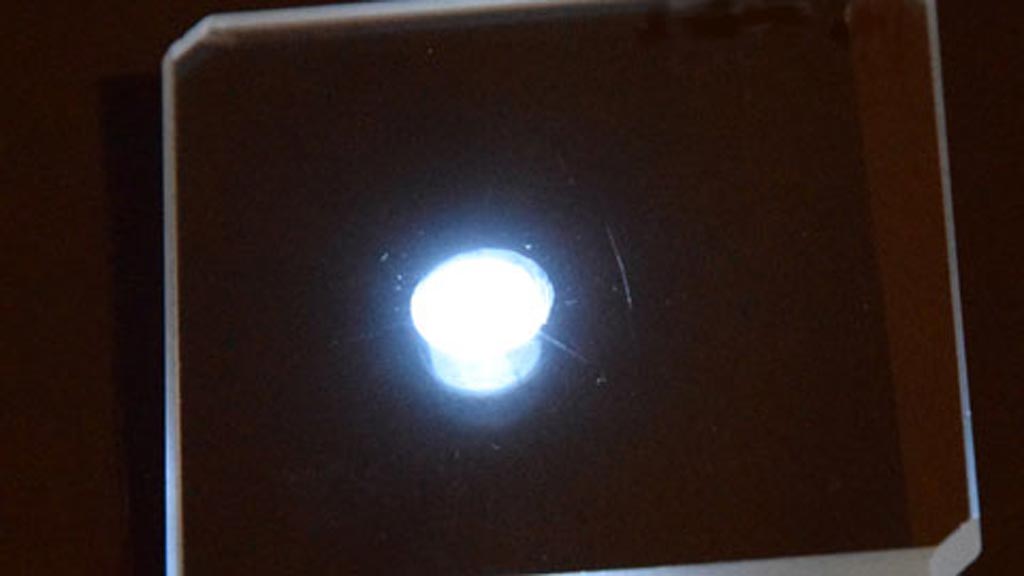Photochromic Materials Help Monitor UV Radiation Levels
By MedImaging International staff writers
Posted on 30 May 2018
A synthetic material based on natural hackmanite can be tuned to change color in response to ultraviolet (UV) radiation levels, according to a new study.Posted on 30 May 2018
Developed at the University of Turku (UTU; Finland), Uppsala University (UU; Sweden), and other institutions, SensoGlow is composed of (Na,M)8Al6Si6O24(Cl,S)2 synthetic hackmanites that have been modified so that their body color is sensitive to the solar UV index as well as to different UVA, UVB, UVC radiation levels. The color change material is not based on a structural change, but rather on the electron storage in the material, which makes it more durable than organic alternatives and also reversible.

Image: A hackmanite under UV light (Photo courtesy of University of Turku).
The color intensity of the SensoGlow material correlates with the dose of radiation. It could be used, for example, as a sticker attached to a watch. The amount of radiation could be quantified by taking a picture of the sticker with a mobile phone, with an app indicating the value of the UV index. Once removed from UV radiation, the hackmanite electrons return to their ground state, and the color of the material returns to normal. According to the researchers, the production of SensoGlow material is very inexpensive due to the fact that it is composed of common elements. The study was published in the June 2018 issue of Materials Horizons.
“We believe that it is possible to produce an affordable, versatile, and long-lasting UV radiation detector that could function in everyday use to monitor your UV radiation dose. This monitoring could be done using a mobile app, for example,” said senior author Mika Lastusaari, MSc, docent in inorganic chemistry at UTU. “Through these results, we were able to gain more information on the mechanism related to the color change, and on color reversion.”
UV is an electromagnetic radiation with a wavelength from 10 nm to 400 nm, shorter than that of visible light but longer than X-rays. It is present in sunlight, constituting about 10% of the total light output of the Sun, and is also produced by electric arcs and other specialized lights, such as mercury-vapor lamps. Although UV is not considered an ionizing radiation, it can cause chemical reactions and causes many substances to glow or fluoresce. Consequently, the chemical and biological effects of UV are greater than simple heating effects, and many practical applications of UV radiation derive from its interactions with organic molecules.
Related Links:
University of Turku
Uppsala University














